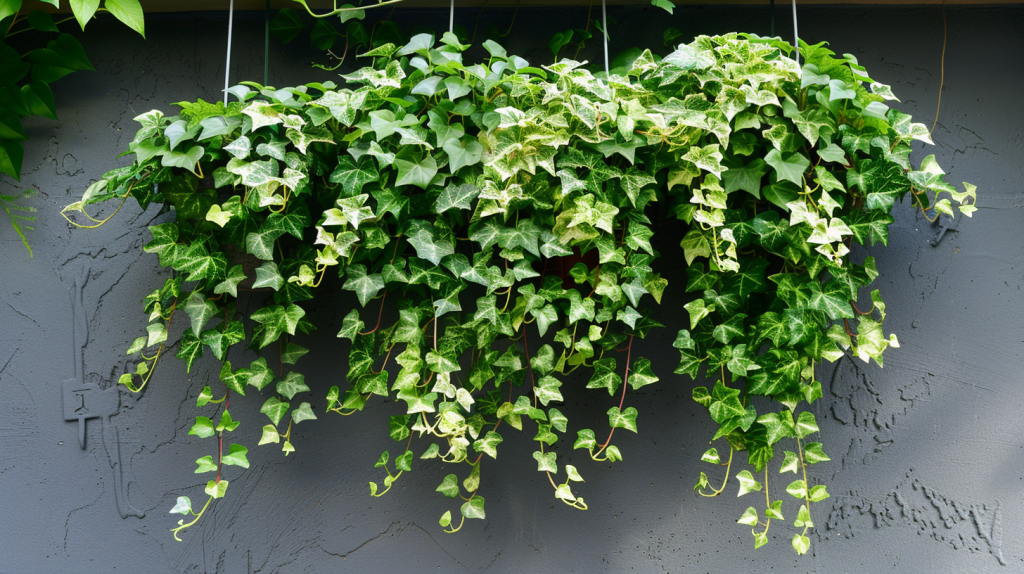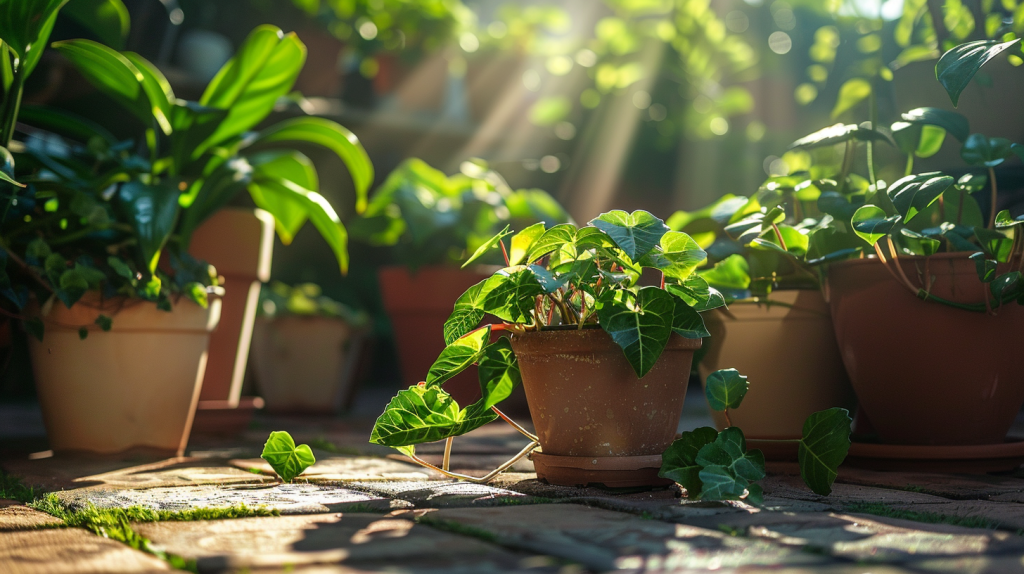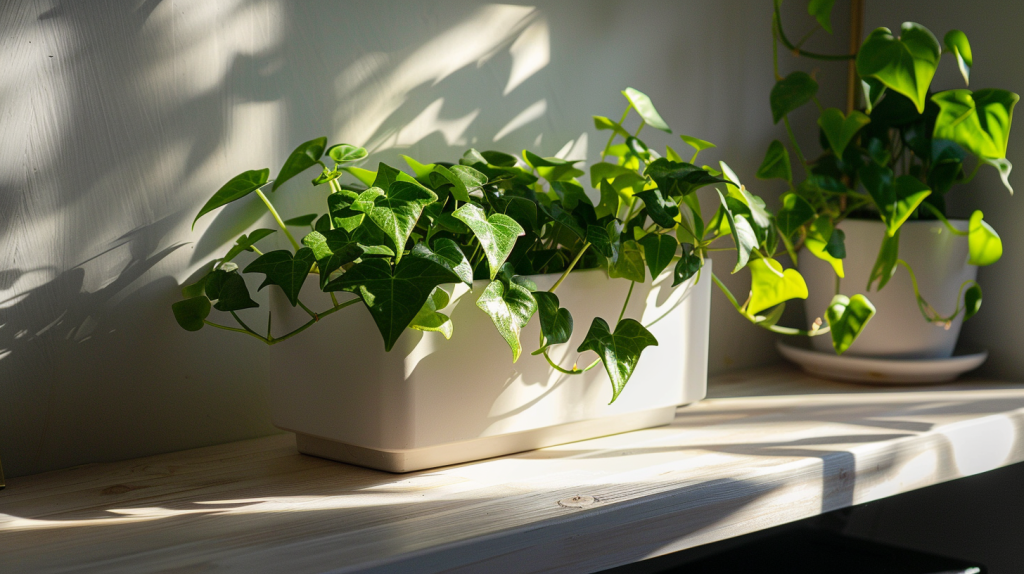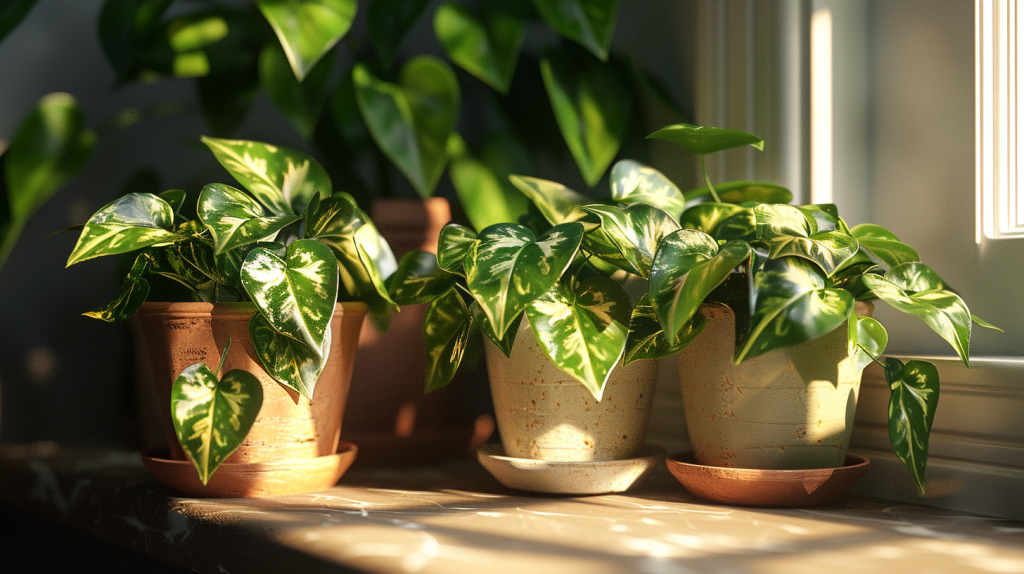Brief overview of Devil’s Ivy plant
I can confirm that Devil’s Ivy, also known as Pothos or Epipremnum aureum, is a popular houseplant known for its striking appearance and ease of care. Originating from the Solomon Islands, this tropical vine thrives in rainforests. Indoors, it can cascade in hanging baskets or climb a moss pole or trellis. Its appeal stems from its heart-shaped leaves and adaptability to various indoor conditions.
Explanation of why styling the plant is important
Proper styling is vital for Devil’s Ivy’s health and aesthetics. While easy to maintain, selecting the right pot and location is essential. The pot should offer good drainage and fit the plant’s roots to prevent root-binding. Choose a location with appropriate light and avoid extreme temperatures or drafts.
Pruning and training are key. Regular pruning ensures balanced growth, while training, whether climbing or cascading, adds visual appeal. Use gentle ties to avoid stem damage.

Styling Devil’s Ivy not only promotes health but also complements your home decor. The right pot and positioning create a cohesive, captivating appearance. With correct styling, Devil’s Ivy becomes a stunning home decor element.
Understanding Devil’s Ivy
Devil’s Ivy, also known as Pothos or Epipremnum aureum, is perfect for gardening beginners. This sturdy, fast-growing plant has heart-shaped, variegated leaves in shades of green to yellow-green. It produces aerial roots for climbing and improves indoor air quality, making it a valuable addition to homes or offices.
Requirements for growing the plant
Devil’s Ivy is a resilient plant, easy to care for and adaptable to various light conditions, though it prefers bright, indirect light. For optimal growth, use well-draining soil and water moderately. While it enjoys warmth and humidity, it fares well in standard indoor climates. In essence, Devil’s Ivy is low-maintenance, ideal for beginners or those seeking effortless houseplants.
Choosing the Right Pot
Choosing the right pot for Devil’s Ivy is crucial. The pot should be at least 2 inches larger in diameter than its current one, offering room for root growth and proper drainage. Always opt for pots with drainage holes to avoid waterlogging and potential root rot. If using decorative pots without these holes, place Devil’s Ivy in a plastic pot with drainage inside the decorative one.
The pot material should be sturdy, like terracotta or ceramic, but thick enough to avoid cracks. If hanging the plant, consider the weight and use a secure hook or select a lightweight pot.

Recommended pot materials
Choosing the right pot for Devil’s Ivy is crucial for its growth. Terracotta pots, with their porous nature, ensure good drainage. Plastic pots are lightweight and easily portable. Though ceramic pots are visually appealing, they might not drain as effectively, risking root rot. When picking a pot, consider size, drainage, and durability to accommodate the plant’s growth without breakage. A suitable pot promotes growth and enhances indoor aesthetics.
Selecting the Best Location
When choosing a location for Devil’s Ivy, it’s vital to ensure appropriate light exposure; it prefers bright, indirect light but can handle low light. Given its tropical nature, it thrives in warm, humid conditions. Dry areas might cause leaf discoloration or drop. Also, provide enough space for its trailing vines and foliage to ensure good air circulation and prevent overcrowding.
Recommended locations for Devil’s Ivy
When placing Devil’s Ivy, consider its growth habits. While adaptable, it requires specific conditions for optimal health. Hanging baskets are popular, letting vines cascade beautifully, but ensure proper light, temperature, and humidity.

For vertical spaces, training the plant to climb a moss pole or trellis avoids tangling and adds appeal. Ensure the support is sturdy. Alternatively, placing it on shelves or tables works, but consider its trailing nature to prevent entanglement and provide space for growth.
In essence, while Devil’s Ivy is versatile in placement, it needs proper care to shine in indoor spaces.
Styling Devil’s Ivy in Your Home
Styling Devil’s Ivy is key to enhancing its beauty in your home. You can place it in a decorative pot for a draping effect, train it to climb a moss pole or trellis for vertical depth, or use a hanging basket for a cascading visual. Whichever method, ensure the location meets its light, temperature, and humidity needs for optimal health.
Complementary decor styles
Devil’s Ivy is a versatile plant fitting various decor styles. For a bohemian vibe, use macrame hangers or natural materials like wood or woven textiles. A sleek, minimalist pot suits a modern look, emphasizing the plant’s beauty in a tidy space. It can brighten a neutral setting or match vibrant decor.

It’s vital to select the right location, pot, and decor to highlight Devil’s Ivy’s beauty. Ensure the plant’s health is prioritized in styling to seamlessly bring nature’s beauty indoors.
Devil’s Ivy Care and Maintenance
Devil’s Ivy requires consistent watering, ensuring the soil is moist but not soggy. Water when the top inch of soil is dry and ensure proper drainage to avoid root rot. For healthy growth, use a balanced, water-soluble fertilizer monthly during the growing season.
Pests and diseases
Devil’s Ivy is generally low-maintenance and resistant to many pests. Still, it can be vulnerable to mealybugs, spider mites, and scale insects. Address these using insecticidal soap or a water and dish soap mix. Regularly inspect the plant, isolating affected areas to prevent pest spread.

Root rot, often due to overwatering or poor drainage, is a primary concern. Use well-draining soil in a pot with drainage holes and avoid letting the plant sit in standing water. Let soil dry slightly between watering and be cautious with fertilization.
With proper care, Devil’s Ivy can stay healthy for years. Regular checks help catch and prevent issues early on.
Repotting
Repot Devil’s Ivy every 1-2 years to avoid it becoming root-bound. Choose a pot one size larger, fill it with well-draining soil, then gently transfer the plant, loosening any tight roots. Water it well after repotting.
With these care tips, Devil’s Ivy can thrive and be a stunning, easy-care addition to your home.
